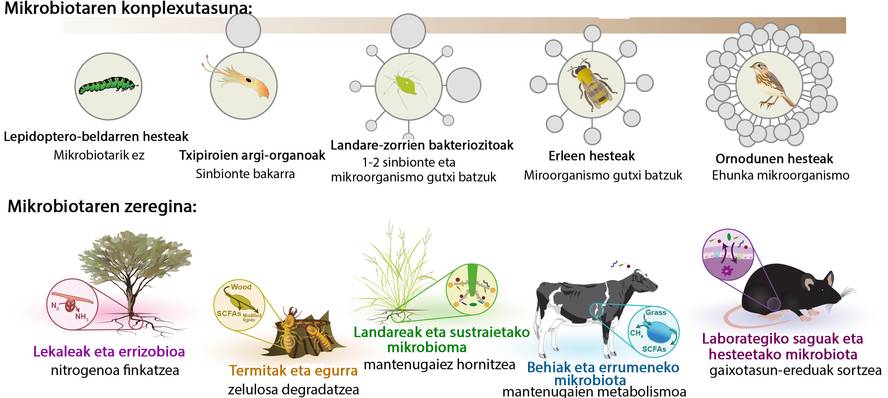Hologenomics: clarifying the relationship between host and microbe
Alberdi and partners have published an article in the journal Nature Reviews Genetics on the means to take this step. Hologenoma is the genome set of all organisms that form an animal or plant: the host and its microorganisms. Alberdi believes that current sequencing techniques, CRISPR-Cas9 and computational capacity already allow a systematic analysis of the genetic characteristics of any host and their microbes, integrating this variable in conventional biological investigations.
Until now, cell cultures, functional tests or microscopy had to be performed to characterize one by one the microbial taxa of the host, so the capacity of scientists was very limited. Microbial complexity is also important: they are not just bacteria, but viruses, archaea, fungi, protozoa or helminths. However, new molecular technologies allow the sequencing of whole genomes in samples with complex DNA mixtures and all at once.
According to researchers, an extension of hologenomics will allow science to determine how the genetic characteristics of hotels and microorganisms influence intra-community interactions. For example, how animal intestinal morphology produces oxygen gradients for bacteria, how host lipid production conditions superficial microbiota, or how bacteria alter host gene expression.
Hologenomics applied to livestock
Through Hologenomics, Alberdi and his members analyze the interaction between the cattle and the microorganisms they live with, and consider that it has a great influence on animal health and production. It has already become a global strategic priority in livestock farming. “We are developing a new technology to reconstruct these interactions in three dimensions. We call them 3D'omic landscapes," says Alberdi. “We are basically studying how the genes of all of them are expressed on a microscopic scale. If we clarify the genetic characteristics of animals/plants and microorganisms that increase production the most, we can actively manipulate the microbial community. Now it's done with probiotics and prebiotics, but it's not very effective. Hologenomics will allow us to find the most appropriate communities with much more precise knowledge.”
“We will first apply to the cultivation of chickens and pigs, but the technology will apply to agriculture, biomedicine and also to the conservation of nature.” Moreover, researchers believe that it will help solve the universal interactions and relationships between the different types of living beings on the planet.
Climate change
In addition, microorganisms can help animals and plants adapt to climate change. “Bacteria undergo a very rapid genetic evolution, which is constantly doubling in contrast to hospitality. Many animals and plants will lack the capacity to deal genetically relatively quickly with climate change. They should be supported by microorganisms that will provide additional adaptability.”







